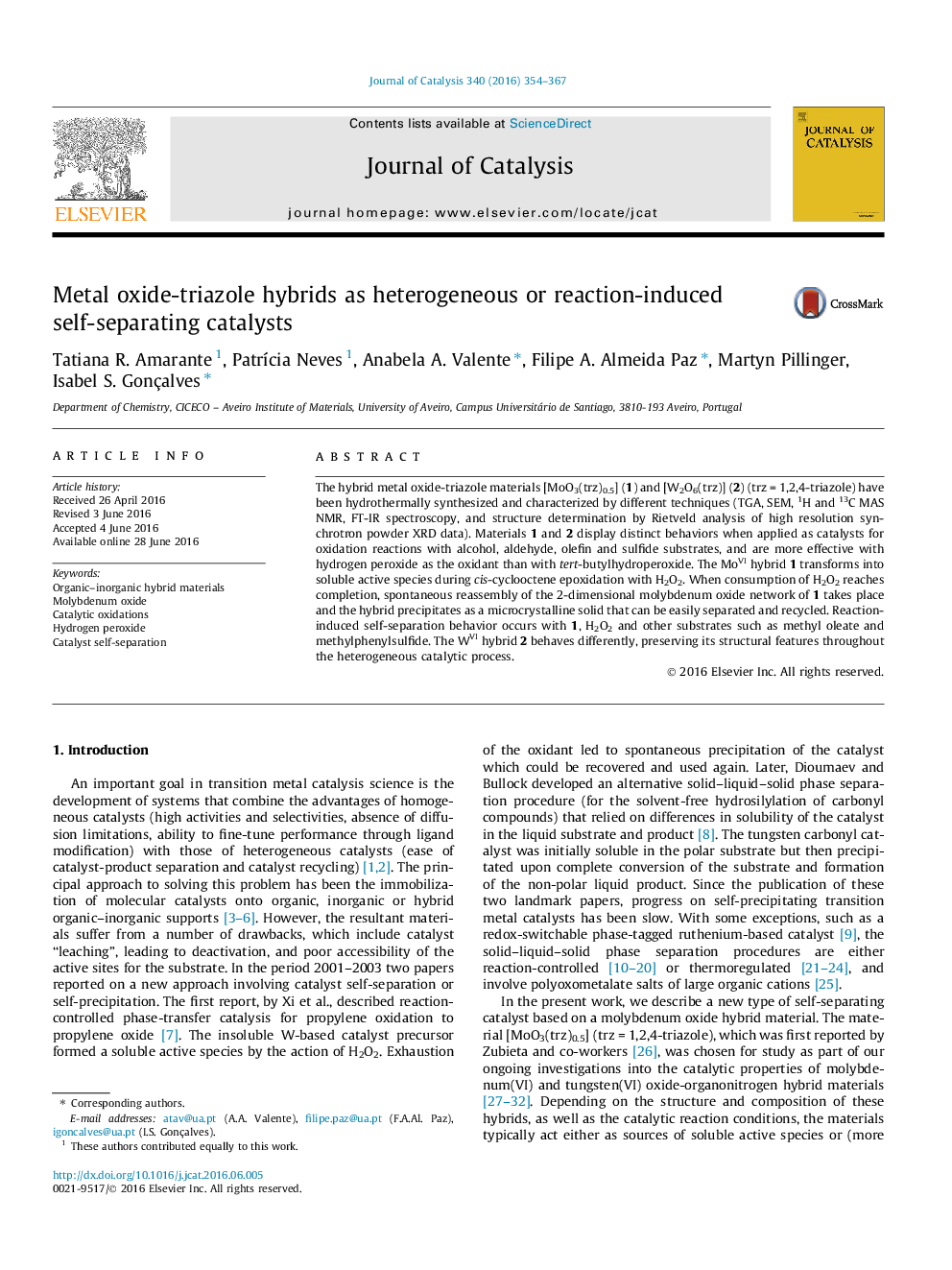| Article ID | Journal | Published Year | Pages | File Type |
|---|---|---|---|---|
| 60536 | Journal of Catalysis | 2016 | 14 Pages |
•Synthesis of the W analogue (2) of the hybrid solid [MoO3(1,2,4-triazole)0.5] (1).•Use of 2 as a heterogeneous catalyst for cyclooctene epoxidation with aq. H2O2.•Use of 1 as a self-separating catalyst with alcohol, olefin and sulfide substrates.•Insoluble 1 reacts with H2O2 to give a homogeneous oxoperoxo molecular catalyst.•Exhaustion of the oxidant induces spontaneous reassembly of the 2D structure of 1.
The hybrid metal oxide-triazole materials [MoO3(trz)0.5] (1) and [W2O6(trz)] (2) (trz = 1,2,4-triazole) have been hydrothermally synthesized and characterized by different techniques (TGA, SEM, 1H and 13C MAS NMR, FT-IR spectroscopy, and structure determination by Rietveld analysis of high resolution synchrotron powder XRD data). Materials 1 and 2 display distinct behaviors when applied as catalysts for oxidation reactions with alcohol, aldehyde, olefin and sulfide substrates, and are more effective with hydrogen peroxide as the oxidant than with tert-butylhydroperoxide. The MoVI hybrid 1 transforms into soluble active species during cis-cyclooctene epoxidation with H2O2. When consumption of H2O2 reaches completion, spontaneous reassembly of the 2-dimensional molybdenum oxide network of 1 takes place and the hybrid precipitates as a microcrystalline solid that can be easily separated and recycled. Reaction-induced self-separation behavior occurs with 1, H2O2 and other substrates such as methyl oleate and methylphenylsulfide. The WVI hybrid 2 behaves differently, preserving its structural features throughout the heterogeneous catalytic process.
Graphical abstractFigure optionsDownload full-size imageDownload high-quality image (153 K)Download as PowerPoint slide
